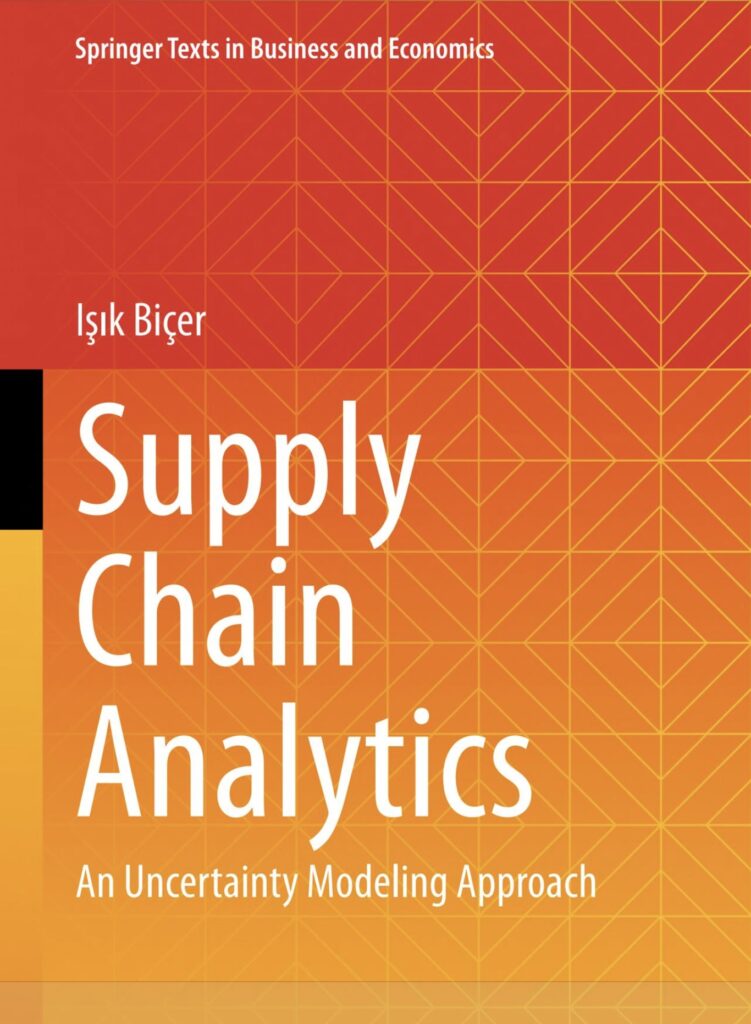An Uncertainty Modeling Approach
by Isik Bicer, Springer Nature, 2023

Supply chain professionals make several decisions to coordinate the flow of goods along the chain. Meanwhile, they collect information from different resources to manage uncertainties. Digital applications utilize both predictive and optimization methods to help the professionals make decisions under uncertainty. Here, standard applications aggregate transactional data to represent an uncertain variable as a single column in data tables. This approach causes the loss of information and sub-optimal decisions. Our uncertainty modeling approach corrects this (common) mistake by focusing on how uncertainties are formed as a combination of several parameters. We then integrate optimization methods to make critical decisions based on our sophisticated uncertainty model. Please see this Harvard Business Review article for a real-world business case of our approach.
This book walks the reader through analytical methods needed for uncertainty modeling in different supply chain contexts. There is no doubt that this cannot happen without the use of algorithms and computing. Therefore, we complement the book with an interactive web tool built on the Python programming language. The Python codes are also shared so those readers who are interested can use the codes to run the experiments on their own computers.
Link to the publisher's book website: https://link.springer.com/book/10.1007/978-3-031-30347-0
Book Outline
- Chapter 1: Introduction and Risk Analysis in Supply Chains
- Chapter 2: Analytical Foundations: Predictive and Prescriptive Modeling
- Chapter 3: Inventory Management under Demand Uncertainty
- Chapter 4: Uncertainty Modeling
- Chapter 5: Supply Chain Responsiveness
- Chapter 6: Managing Product Variety
- Chapter 7: Managing the Supply Risk
- Chapter 8: Supply Chain Finance
- Chapter 9: Future Trends: AI and beyond
- Appendix: Introduction to Python Programming for Supply Chain Analytics
- Bibliography
- Index
An interactive web application was developed to demonstrate many of the algorithms covered in the textbook. For each algorithm, users can change input values and see the corresponding changes in the output. All algorithms were implemented in Python using common scientific computing libraries, with all the required code and dependencies provided.
If the link doesn't work, please write https://scanalytics.pythonanywhere.com to your browser!
